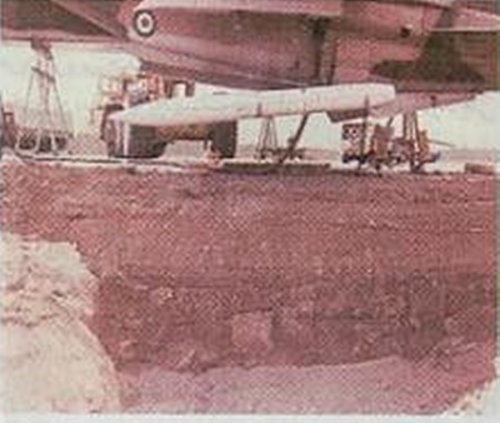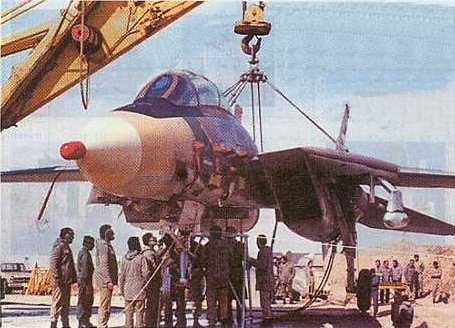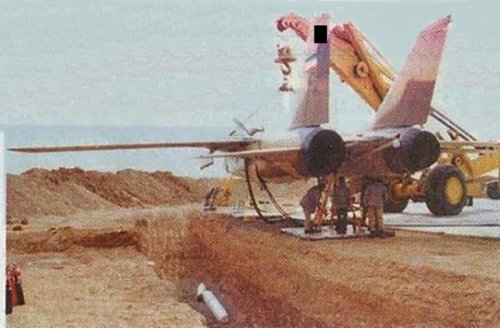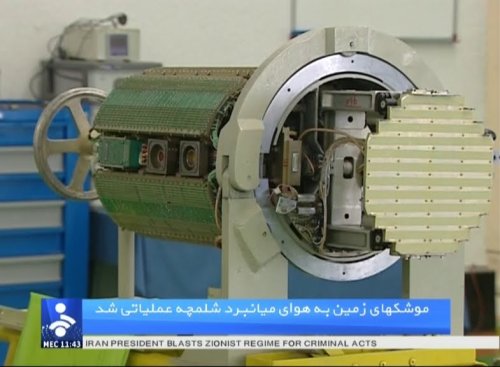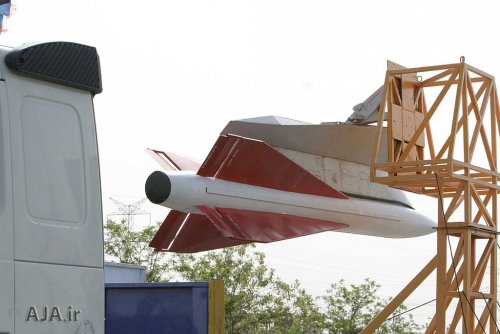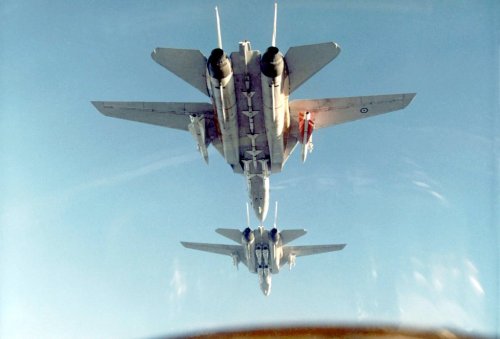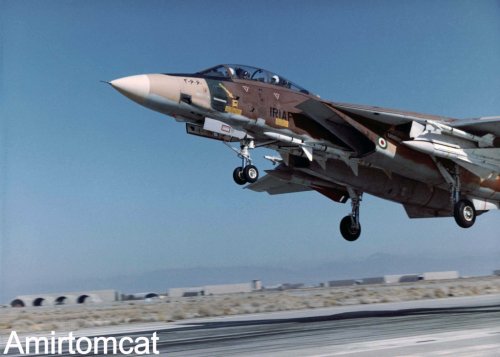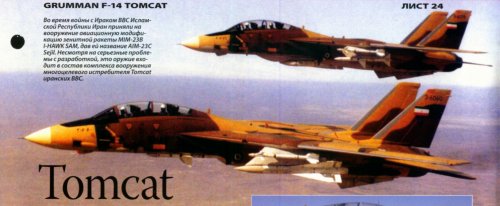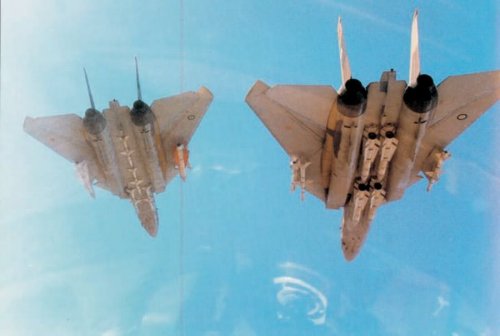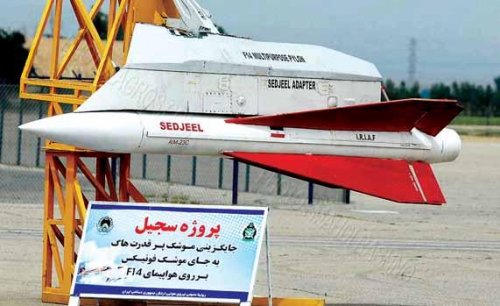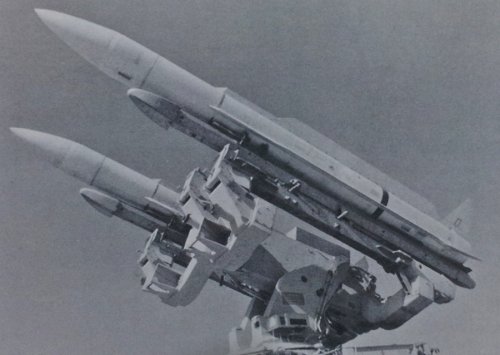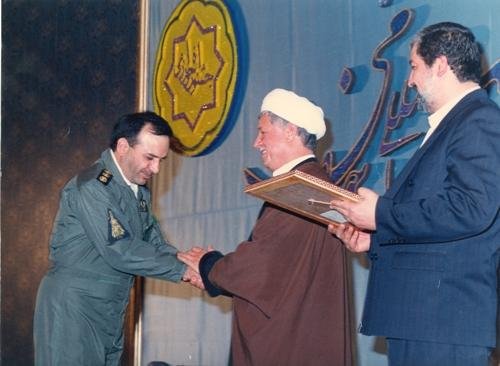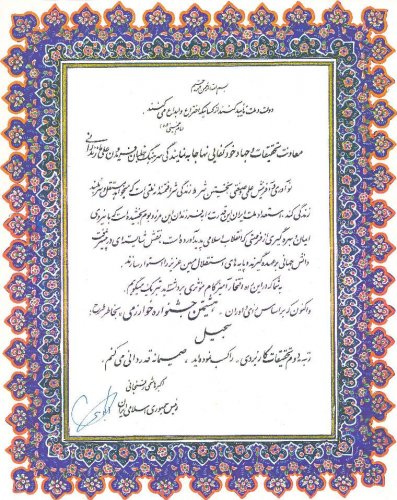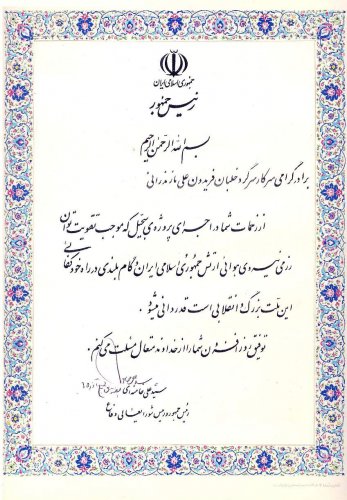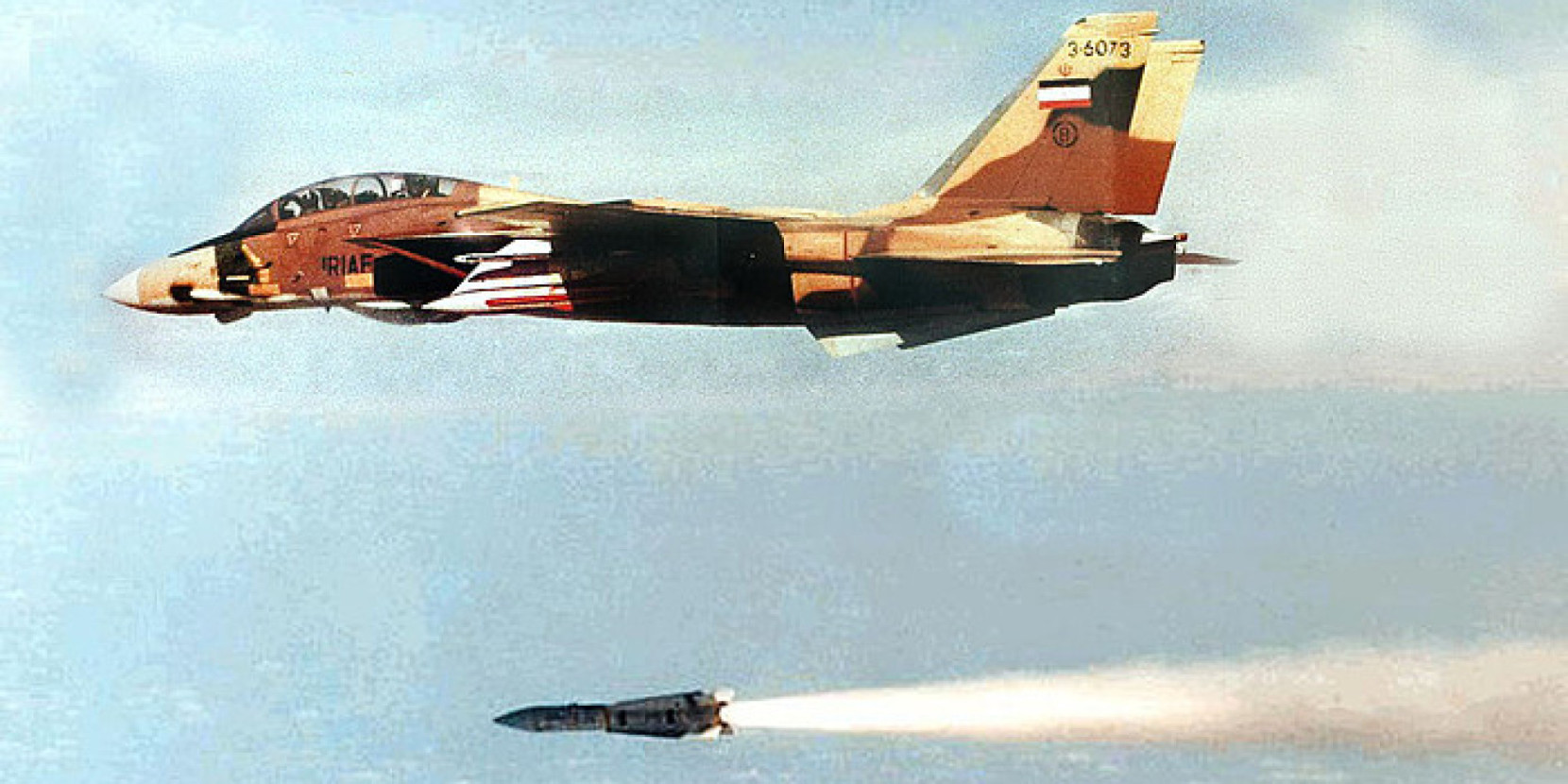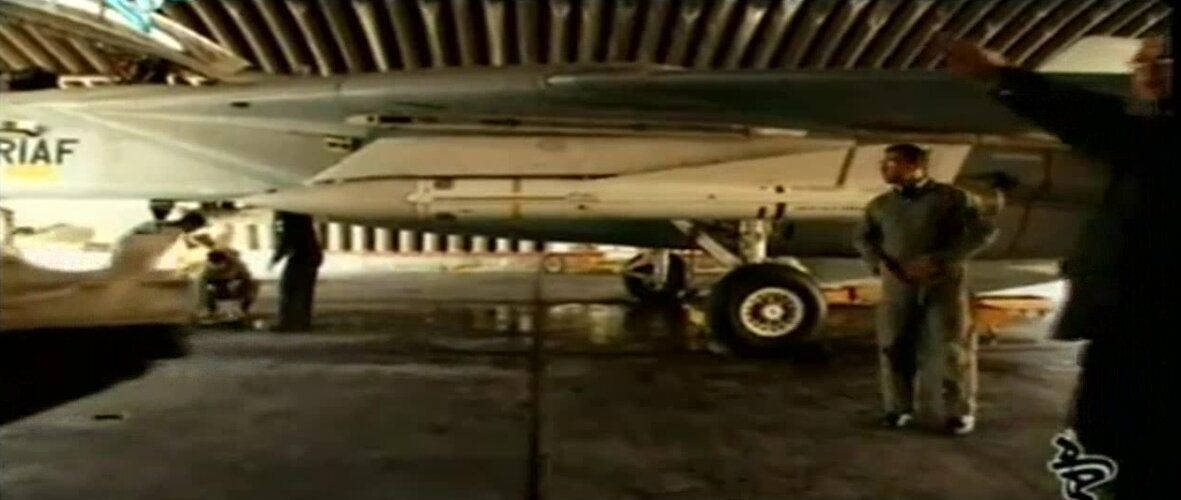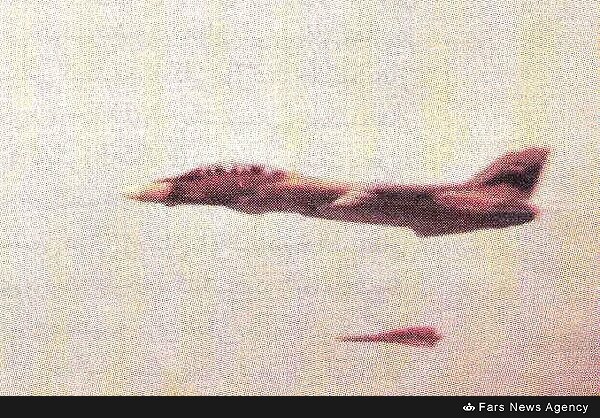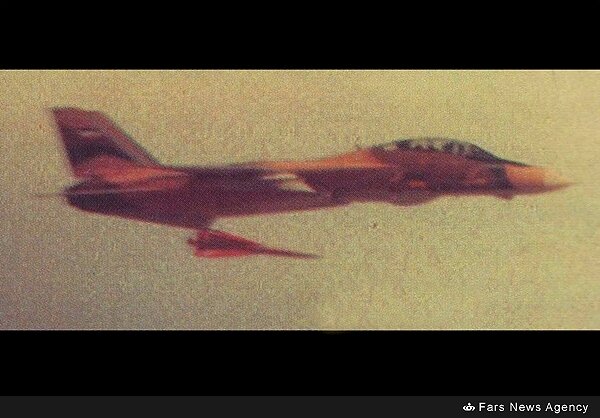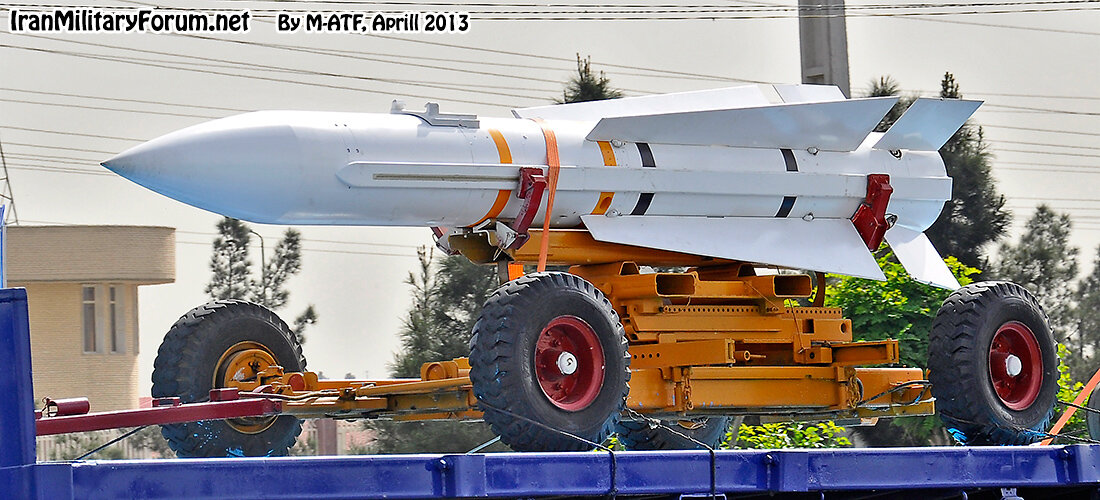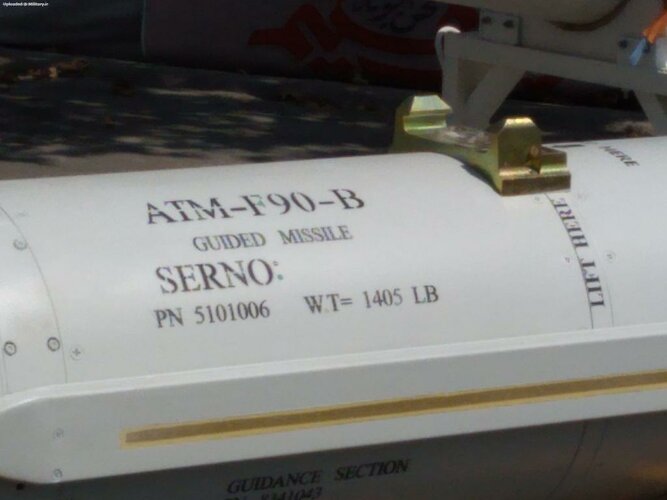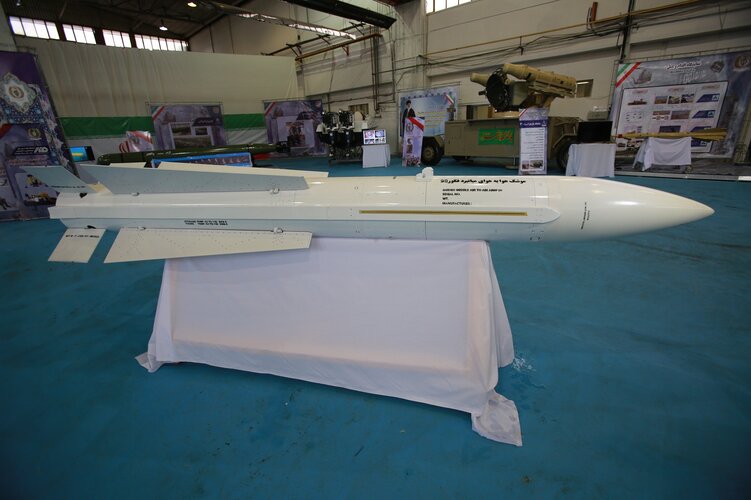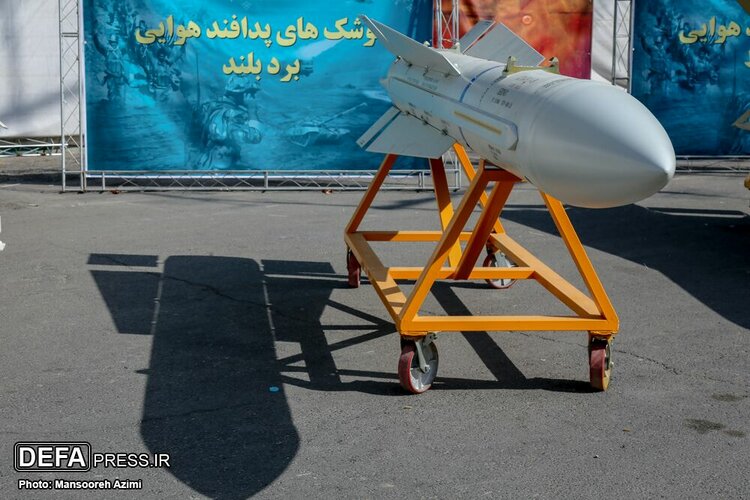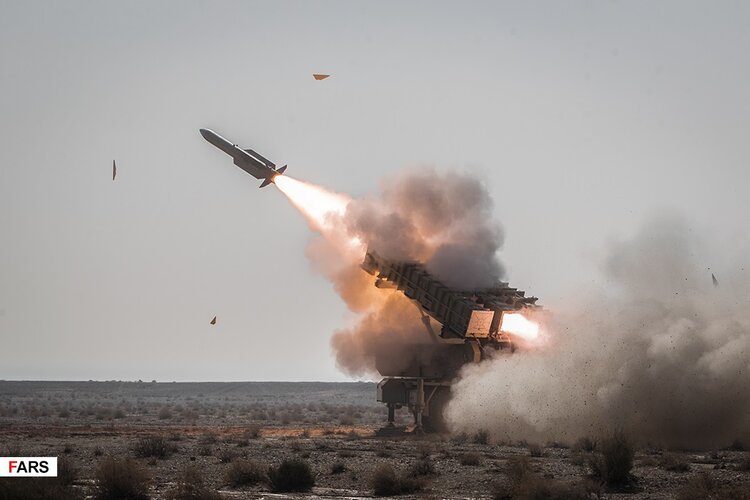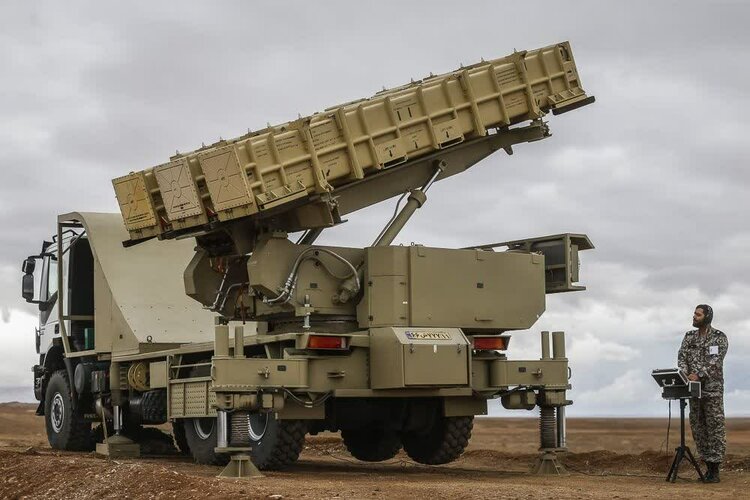I found this from an Iranian forum. It seems to be a fairly descriptive account of the project, but cannot verify its authenticity. The account is given by Feriedoun Ali Mazandarani (apparently the head of the project) in the forum through several questions and details collected in pdf format by the members. The forum is shut down now for the second time!
In 1986, during the Iran-Iraq war (1980-1988), The IRIAF F-14A Tomcats faced a serious problem; a shortage of air to air missiles. The American made air superiority fighter aircraft was employed in The Imperial Iranian Air Force in January of 1976, armed with the long range Phoenix missile. Before the deployment of the short range Sidewinder missile model “L” and the medium range Sparrow missile model “F”, which were adapted to the F-14, The Iranian Revolution broke out in early 1979. As a result, all military contracts were nullified by the new Islamic Government, leaving the F-14s armed with only the Phoenix missile and the 20mm M61 Vulcan Cannon.
Once the Iran-Iraq war began in September of 1980, the F-14s scrambled to defend the country; however, the prolonged war and the imposed military sanctions by the U.S., caused The Tomcats to suffer from a shortage of operational Phoenix missiles. Although The IRIAF still had substantial quantities of the Phoenix missile, but the lack of coolant and the decaying batteries of the missile left the F-14s unarmed. The F-14s were also armed with Sparrow E-4 and Sidewinder G air to air missiles, but the missiles used for the F-4s were not 100% compatible to the F-14’s radar, the AWG-9, and offered a degraded rate of accuracy. The IRIAF needed a new accessible and reliable air to air missile. The newly created office of Air Force Deputy to the Office of Self-Sufficiency Movement proposed the use of MIM-23 Hawk surface to air missile as a replacement for the Phoenix missile; however, the suggestion was strongly opposed by Col. Houshang Seddigh, The IRIAF Commander and his Air Defense Directors.
Nevertheless, The Air Force Deputy to the Office of Self-Sufficiency Movement, despite oppositions to the proposal, presented its confidential plan to The Deputy Commander in Chief at the time, Ali Akbar Hashemi Rafsanjani. The plan was approved for the commencement of the tests and orders were forwarded to Col. Seddigh. One F-14 and five out of service MIM-23 Hawk Missiles returned back from the front lines were delivered to a hanger for the experimentation.
The project was classified as Top Secret under the supervision of the Self-Sufficiency Movement Office. A team1 of 13, IRIAF personnel consisting of one Pilot, 2 Weapons System Officers “WSO” and 10 specialized personnel, directed by Maj. Fereidoun AliMazandarani, and a support team2 consisting of 9, IRIAF personnel were ordered to finalize the tests within six months.
The missile chosen for the project, MIM-23 Hawk, was longer, wider and heavier than the Phoenix missile making it possible to load only on two of the pylons, No. 1 & 8. The pylons and missiles both were internally reinforced and modified with the proper parts to load the Hawk missiles for flight test. Due to the rapid progress of the program, The IRIAF Commander, Col. Seddigh, began supporting the program unreservedly. Upon the successful flight of the two hanging missiles for take off, aircraft maneuverability, onboard missile stability, landing and all other required tests, the next stage began: the drop of the missile safely before its rocket fired underneath the aircraft. The MIM-23 Hawk missile launched from its launcher directly once it was fired; however, in order for it to be fired from an aircraft, it needed to separate and then fire its rocket at a safe distance from the fighter to avoid damaging it. Besides separating, the missile had to make a 90 degree clockwise turn on its longitudinal axis first before firing its rocket. After finalizing the ground tests, it was time to initiate the first live test.
Six aircrafts were involved in the first live test; i.e., missile release, firing & target acquirement, one F-14 as leader of the group flown by Maj. Fereidoun AliMazandarani, director and pilot of the Sedjil project group, & WSO Capt. Mohammad Oghbaei, two F-4s which would fly on each side of the F-14 and from the rear recording the test by their TISEO, one 707 fuel tanker just in case the test flight took longer than expected and one Falcon Jet flying at 2000ft equipped with cameras and telemetric systems to capture the release and the firing of the missile from below as it flew at line up rest formation. The sixth craft was a remotely controlled BQM-34 Target Drone which was designated as a target for the initial firing test of the SEDJIL air to air missile. After the briefing was finalized by Maj. AliMazandarani in the afternoon, the Falcon pilot declined to fly his aircraft due to the possibility of explosion from the missile if it failed. Although the distance between all aircrafts involved were at a safe distance and breaking away instructions were given to each aircraft, the Falcon pilot still refused to fly his plane on this mission. The debate went on for a few hours and by the time they were finished without reaching a conclusion, it was already too late to initiate the test. Maj. AliMazandarani contacted Col. Seddigh, advising him of the situation and requested a new flight crew that would go through with the plan and test. The Air Force Commander advised the Major to reschedule take off flight for the following morning at 8 am, using his Falcon Jet for the test and sitting in the co-pilot seat himself. Although the commander of the IRIAF, the next morning Col. Seddigh attended the briefing as the co-pilot of the Falcon Jet, while Maj. AliMazandarani, as head of the project and flight leader, briefed everyone once again. The flights took off at 8am from Mehrabad Airport and once everyone was in their position, Major AliMazandarani turned his F-14 towards the target and WSO Capt. Oghbaei fired the first missile at the drone in Semnan Controlled Range. Upon confirmation of the safe dropping and firing sequence of the missile towards the drone, Col. Seddigh ordered the F-14 to fire the second missile as well and after going through the relative processes, a lock on the target was acquired and the second missile was fired by Maj. AliMazandarani toward its target drone. The test was a success in terms of the release and safe firing of both MIM-23s, as well as target pursuit by the missiles. After viewing the test films, the team realized that the time between release and ignition of the missile is slightly long. Since The IRIAF did not have any manufacturing testing equipment, they resorted to unconventional methods of testing. As a result, a trench was dug along the trim pad area in The 8th TFB in Esfahan with the F-14 suspended by a rescue crane over it while having pylon No.1 in the center line of the trench for the firing sequence test. The warhead was removed and the timing between the release and ignition was precisely computed by telemetry instruments without the rocket actually firing. All systems on board the aircraft were on except for the engines and with the help of WSO Lt. Yousef Ahmadi, the time between release and firing was shortened by 5 milliseconds.
After the initial test, the most difficult step began which was the compatibility of the AWG-9 radar’s onboard computer to the Hawk missile. The MIM-23 surface to air missile’s radar system receives all information from the target and feeds it to the missile before firing from its ground launcher; however, if fired from the F-14, it would require a constant data exchange between the AWG-9 radar and the Hawk missile. The MIM-23 needed to understand the data from the AWG-9 that was being fed to it. After a week of intense planning and computer programming, the team came up with a hardware interface box, translating the signals between the F-14 computer and the Hawk missile. Now the F-14 could identify the Hawk missile and the missile could understand all data for flight and trajectory corrections being fed to it from the aircraft. In less than 40 days, the missile was ready and it was time for the live test of the MIM-23 Hawk missile, renamed SEDJIL Missile.
Fifteen days later the same crew scheduled the first hot flight test armed with the Sedjil missile. The F-14 was flying at 22,000 ft and the drone was at 25000 ft with a 25º angle off and a range of 45Km. After the target was picked up and locked on, Maj. AliMazandarani fired his missile as he simultaneously turned opposite the drone’s flight path and several seconds later the target was hit and splashed. However, after these successful tests, there was skepticism amongst the high ranking officers of The Air Defense who suggested testing in a more difficult scenario. This time Maj. AliMazandarani was ordered to stand down and the flight was carried out by the supporting team members, Col. Shahram Rostami, Deputy Director to the Air Force Operations, and WSO Lt. Davood MasoumParast. Major AliMazandarani briefed the flight crew of the process of tracking, locking and firing sequence. Along with Col. Babaii, Director of Air Force Operations, they headed to The Semnan Range and oversaw the test. Once the target was acquired and hit, both the Colonel and Major were the first to arrive at the scene of the downed drone, confirming the kill. Everyone seemed to be satisfied; however, after a few days The Air Defense authorities stated that in order to release the Hawk missiles to the Tomcats, a third hot flight in none ideal conditions and worst case scenario is needed.
The Sedjil Project team was planning a non ideal scenario for the third test drone, when Col. Babaii called from Bushehr 6th TFB directing Maj. AliMazandarani to fly to Bushehr and commence testing on an actual enemy aircraft. After 3 days of full alert, Maj. AliMazandarani and Lt. Ansarin scrambled their F-14A towards incoming Iraqi fighters heading towards Khark Island. At a distance of 25 miles the F-14 fired its first Sedjil missile; however, the missile was one of five missiles used during the initial tests of the project which was loaded by mistake. The bad rocket dropped, fired and did a barrel roll over the front of the cockpit and Radom missing the Tomcat as it headed down towards the sea. The pilots reacquired the target, locked on and fired the second missile at a range of 20 miles, hitting it several seconds later, thus proving the success of the project. It was sheer luck or destiny that saved the F-14 from a disaster that may have suspended the project altogether and perhaps change the face of the war.
On the way back to the base, it was discovered that the downed fighter was the French made Super Etendard capable of carrying the infamous anti ship Exocet missile, one of the five fighters leased from the French government. The test not only proved successful, but revived the IRIAF Tomcats, striking fear into the Iraqi Air Force that the F-14s were still a threat; especially, with the downing of the Super Etendard fighter. After the test, several of the F-14s were modified to carry the Sedjil missile along with the limited supply of operational Phoenix missiles.
The first operational Sedjil air to air missile shot down two Iraqi aircrafts over Kermanshah Province flying in close formation with a single Sedjil missile by IRIAF F-14 pilot, Lt. Col. Asadollah Adeli, eliminating all doubts regarding the reliability and effectiveness of the adapted missile.
As the war ended in 1988, The IRIAF had time to try and revive the Phoenix missiles using substitutes for the coolant and batteries. The IRIAF F-14s now carry both the Phoenix and Sedjil missile on their pylons!

